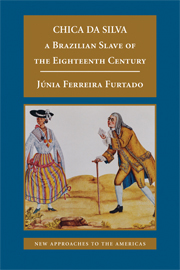Color, Race, and Genomic Ancestry in Brazil: Dialogues between Anthropology and GeneticsPosted in Anthropology, Articles, Brazil, Caribbean/Latin America, Health/Medicine/Genetics, Media Archive on 2011-12-03 18:13Z by Steven |
Color, Race, and Genomic Ancestry in Brazil: Dialogues between Anthropology and Genetics
Current Anthropology
Volume 50, Number 6 (2009)
pages 787-819
DOI: 10.1086/644532
Ricardo Ventura Santos, Professor of Biological Anthropology and Public Health
Oswaldo Cruz Foundation
also Associate professor of Anthropology
National Museum, Rio de Janeiro, Brazil
Peter H. Fry, Professor
Federal University of Rio de Janeiro, Departamento de Antropologia
Instituto de Filosofia e Ciências Sociais/UFRJ, Largo de São Francisco de Paula 1
Simone Monteiro, Senior Researcher
Oswaldo Cruz Institute
Marcos Chor Maio, Senior Researcher
House of Oswaldo Cruz
Oswaldo Cruz Foundation
José Carlos Rodrigues, Professor
Fluminense Federal University
also Associate Professor
Catholic University
Luciana Bastos-Rodrigues
Department of Biochemistry and Immunology at the Institute of Biological Sciences
Federal University of Minas Gerais
Sérgio D. J. Pena, Professor of Biochemistry and Immunology
Institute of Biological Sciences
Federal University of Minas Gerais
In the contemporary world, “race” narratives are so multifaceted that at times, different views of the concept appear mutually incompatible. In recent decades biologists, especially geneticists, have repeatedly stated that the notion of race does not apply to the human species. On the other hand, social scientists claim that race is highly significant in cultural, historical, and socioeconomic terms because it molds everyday social relations and because it is a powerful motivator for social and political movements based on race differences. In this paper we present the results of an interdisciplinary research project incorporating approaches from genetics and anthropology. Our objective is to explore the interface between information about biology/genetics and perceptions about color/race in Rio de Janeiro, Brazil. We argue that the data and interpretation of our research resonate far beyond the local level, stimulating discussion about methodological, theoretical, and political issues of wider national and international relevance. Topics addressed include the complex terminology of color/race classification in Brazil, perceptions about ancestry in the context of ideologies of Brazilian national identity, and the relationship between genetic information about the Brazilian population and a sociopolitical agenda that turns on questions of race and racism.
Read the entire article here.


